-
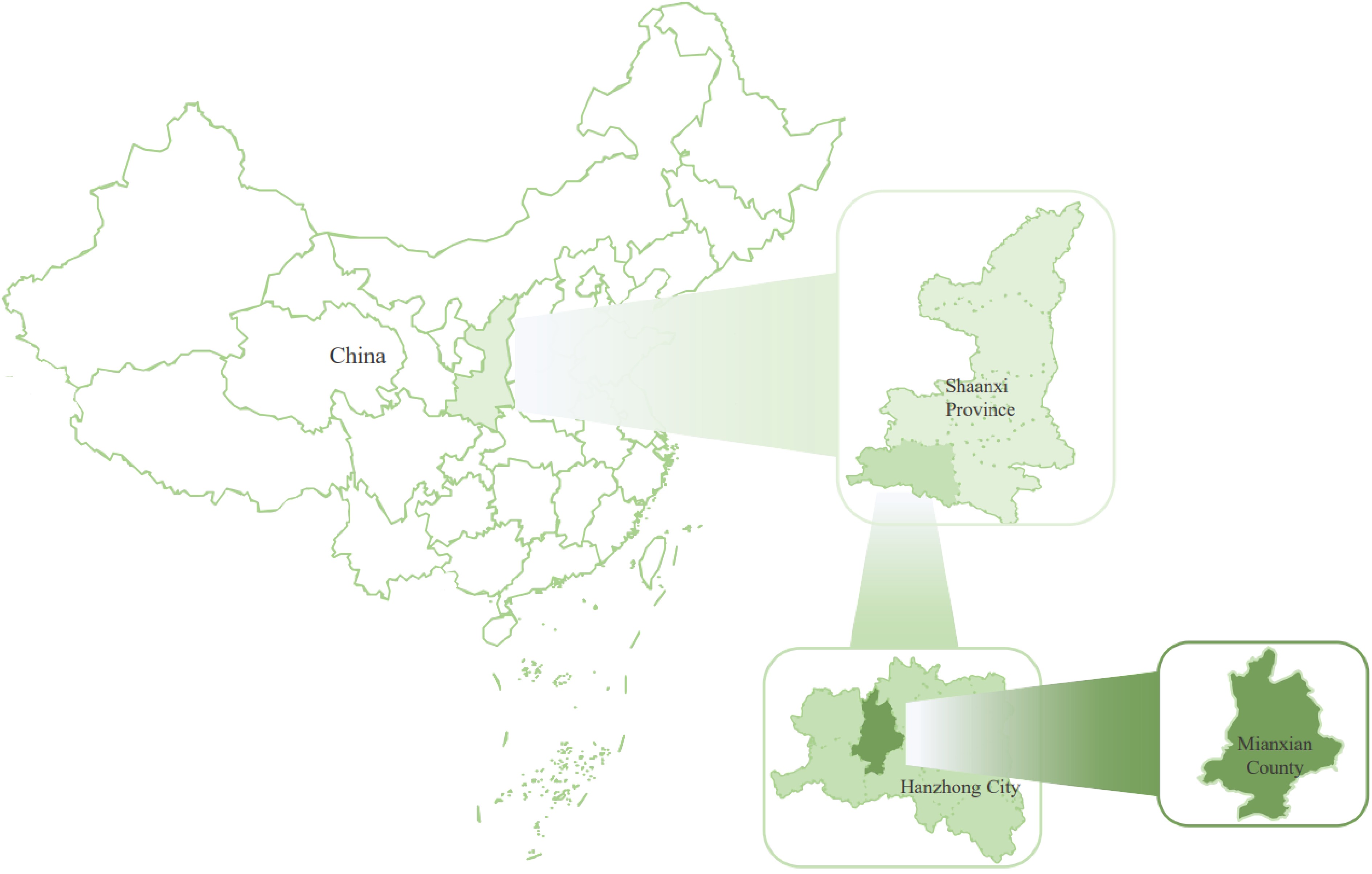
Figure 1.
Location of experimental region.
-
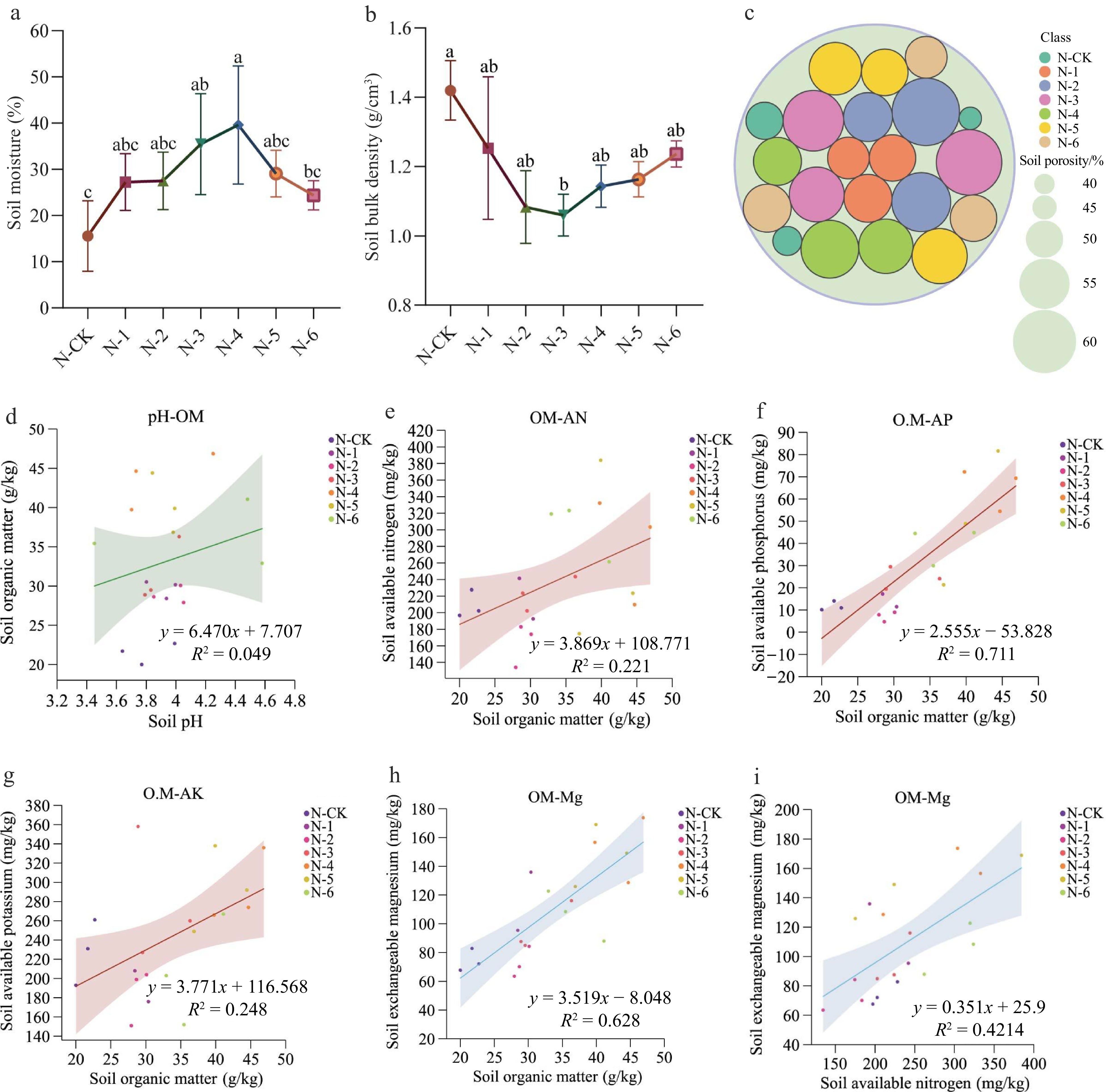
Figure 2.
Effect of nitrogen fertilizer reduction based on bioorganic fertilizer on the physicochemical properties including (a) soil moisture content, (b) soil bulk density, (c) soil porosity in summer under different fertilization treatments. Correlation relations are between (d) soil pH and organic matter, (e) soil organic matter and alkaline hydrolyzable nitrogen, (f) soil organic matter and available phosphorus, (g) soil organic matter and available potassium, (h) soil organic matter and exchangeable magnesium, and (i) between alkaline hydrolyzable nitrogen and exchangeable magnesium content in soil in summer.
-
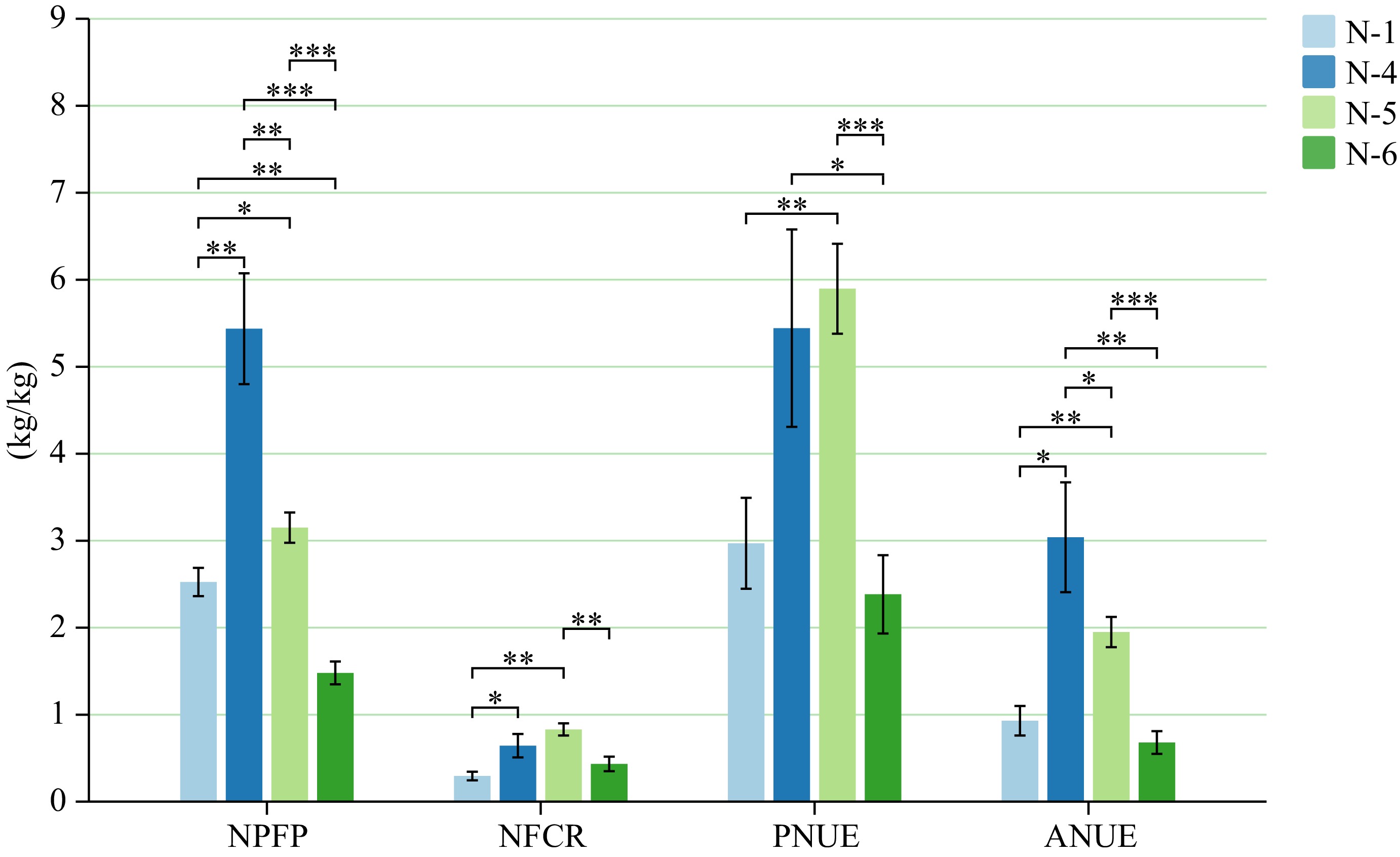
Figure 3.
Effect of nitrogen fertilization treatments nitrogen use efficiency in summer tea. Note: *, ** and *** significant at p ≤ 0.05, p ≤ 0.01 and p ≤ 0.001.
-
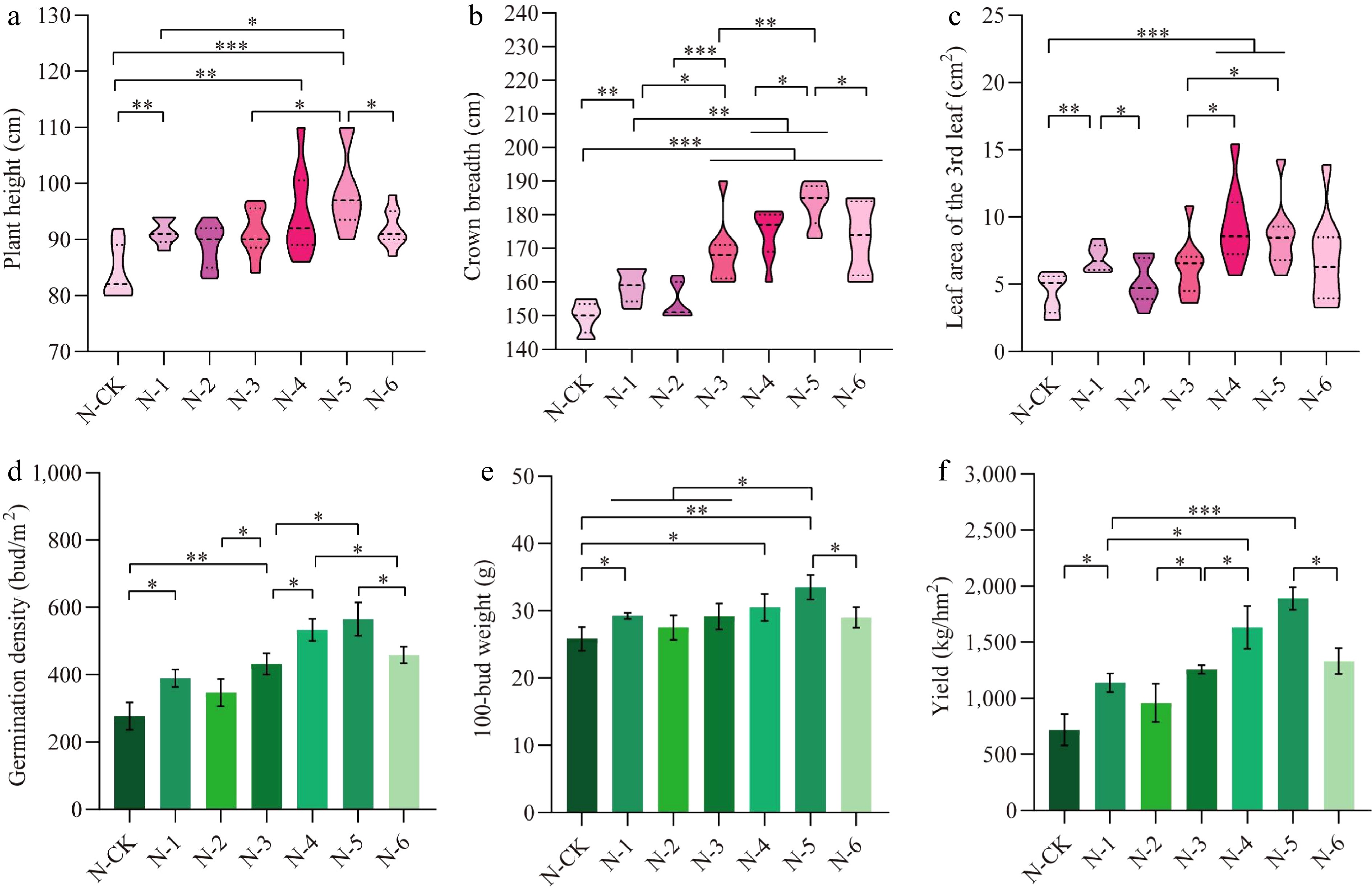
Figure 4.
Effect of nitrogen fertilizer management treatments on (a) tea plant height, (b) plant crown breadth, (c) leaf area of the 3rd leaf, (d) germination density, (e) 100-bud weight of one bud and two leaves of summer tea plants, and (f) yield of one bud and two leaves of tea plants. Note: *, ** and *** significant at p ≤ 0.05, p≤ 0.01 and p ≤ 0.001, respectively.
-
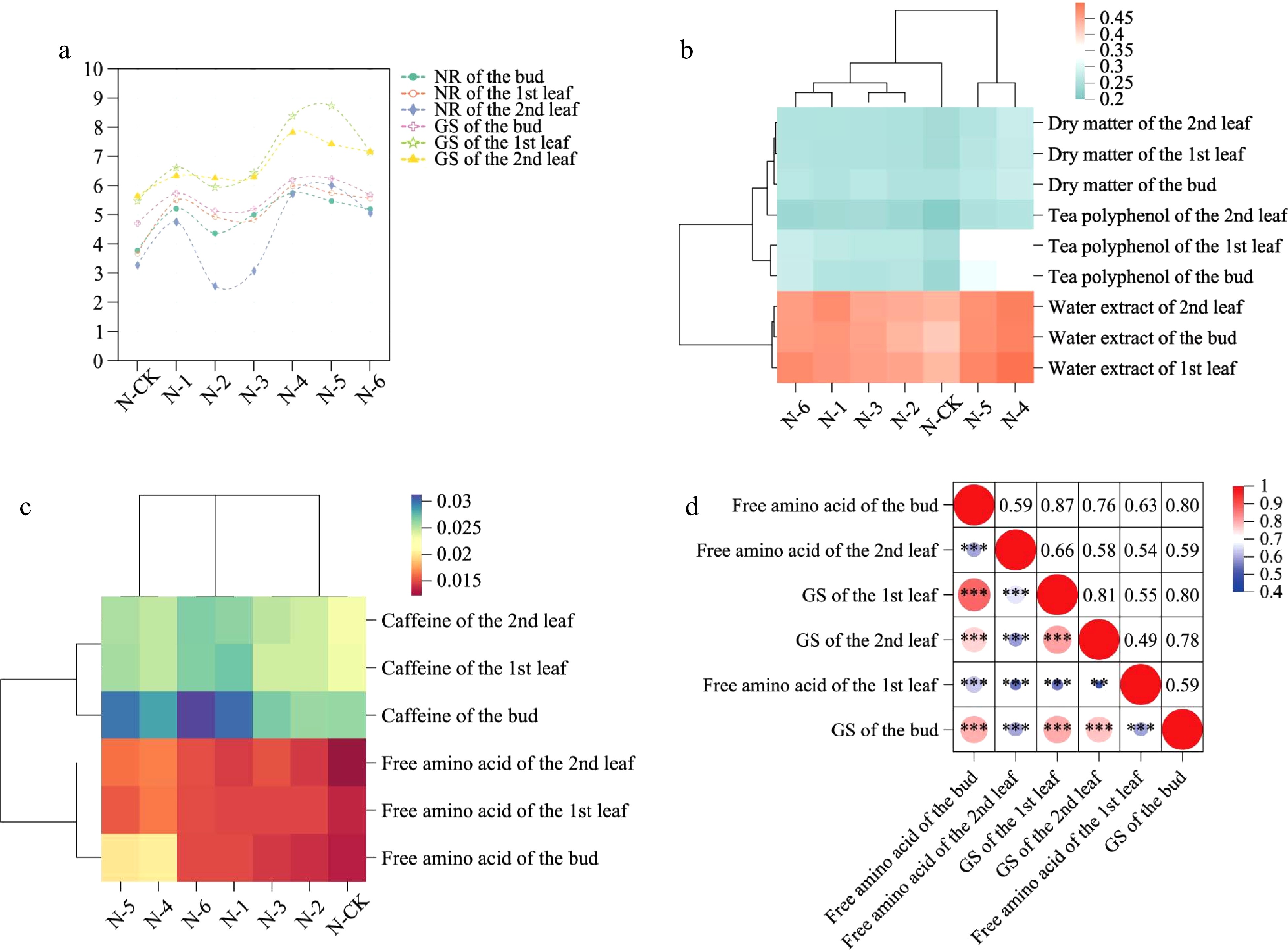
Figure 5.
Effect of reducing nitrogen rates based on bioorganic fertilizer on nitrate reductase, glutamine synthetase activities and quality traits of summer tea. (a) Activities of N metabolizing enzymes nitrate reductase and glutamine synthetase. (b) Dry matter, tea polyphenols, and water extract contents. (c) Caffeine and free amino acid content. (d) Correlation between free amino acid and glutamine synthetase activity. Note: *, ** and *** significant at p ≤ 0.05, p ≤ 0.01 and p ≤ 0.001.
-

Figure 6.
Effect of reducing nitrogen rates based on bioorganic fertilizer on stress related indices in tea organs. (a) Malondialdehyde, proline, and soluble protein contents in the bud. (b) Malondialdehyde, proline, and soluble protein contents in the 1st leaf. (c) Malondialdehyde, proline, and soluble protein contents in the 2nd leaf.
-
Treatment Base fertilizer (mid-to-late September 2022) Additional fertilizer (late February – early March 2023) N Organic fertilizer Microbial agents N Organic fertilizer Microbial agents N-CK — — — — — — N-1 180 — — 270 — — N-2 — 6000 — — — — N-3 — 6000 6+6+6 — — — N-4 120 6000 6+6+6 180 — — N-5 240 6000 6+6+6 360 — — N-6 360 6000 6+6+6 540 — — — means no fertilization. Table 1.
Nitrogen fertilizer application systems based on bioorganic fertilizers.
Figures
(6)
Tables
(1)